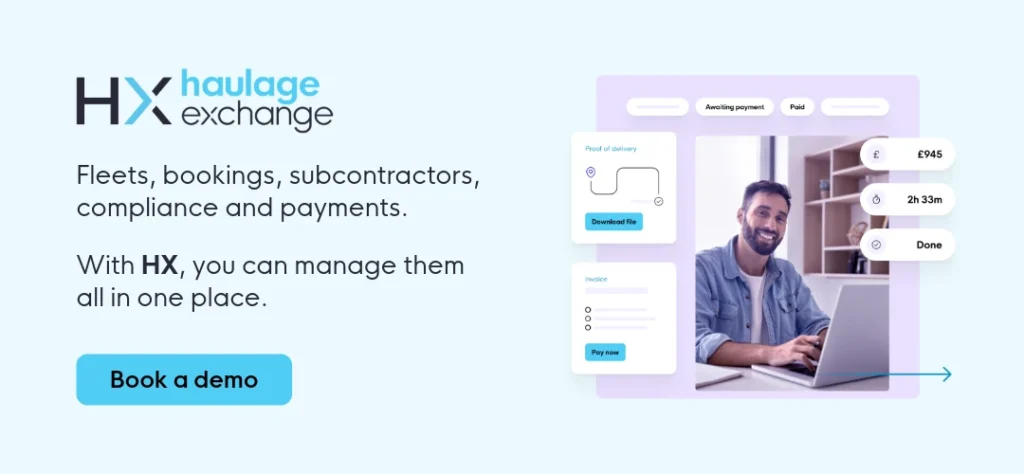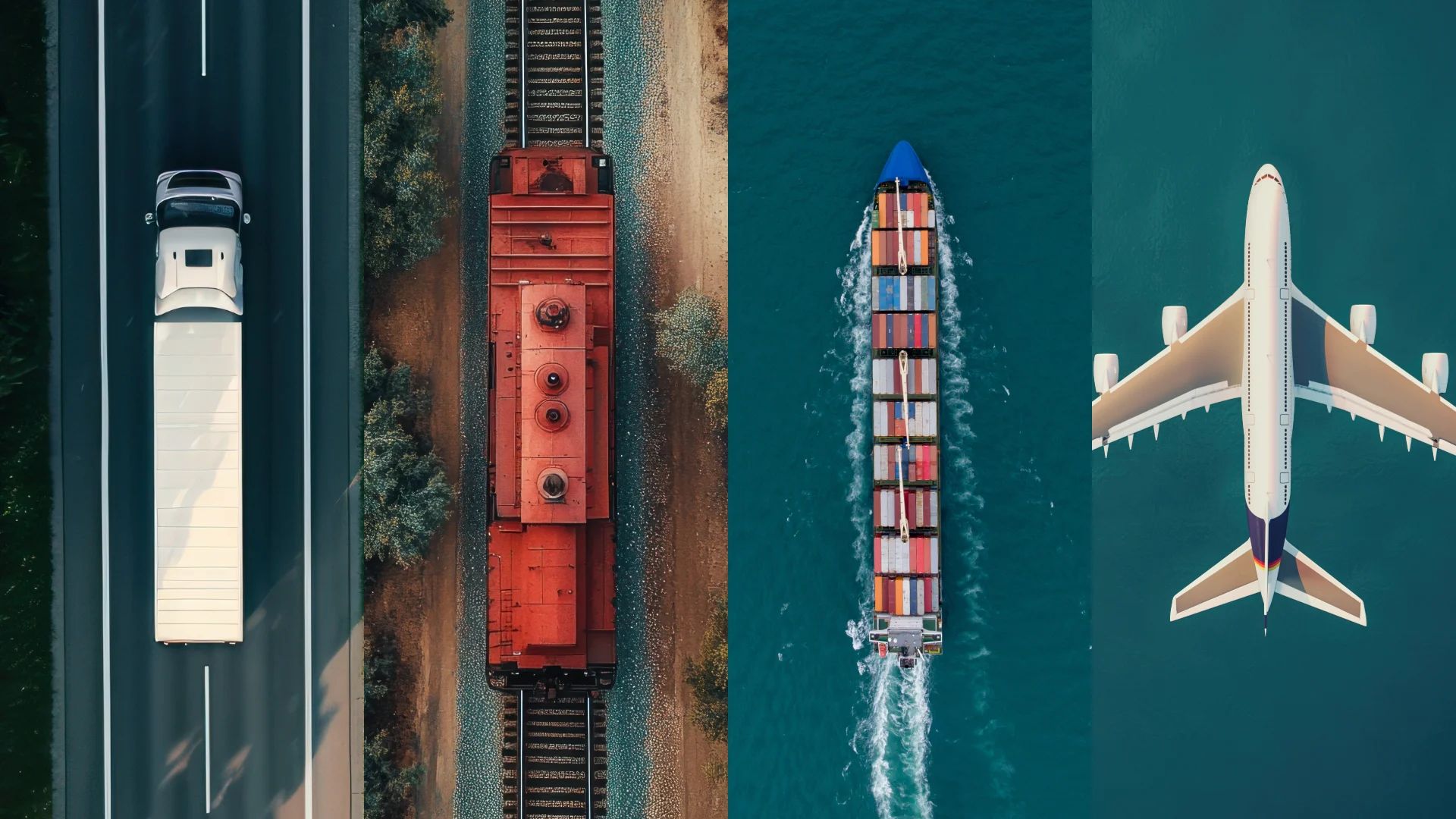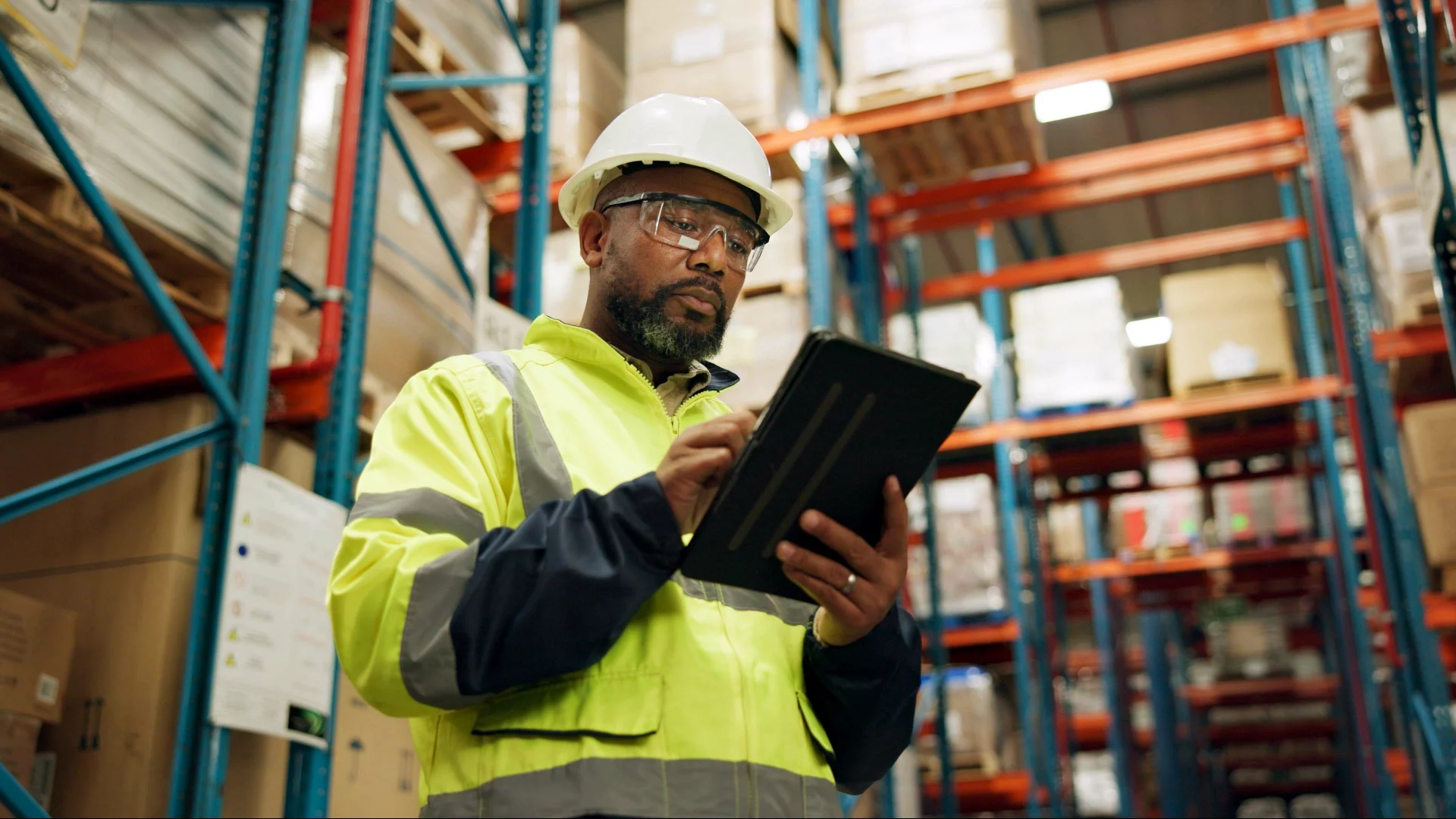Multimodal transport is the movement of goods using two or more different modes of transport under a single contract and operator. This means one logistics provider is responsible for coordinating the entire journey, even if the cargo travels by road, rail, sea, or air.
Multimodal logistics is increasingly popular thanks to its simplicity, speed, and flexibility across borders. In this guide, we’ll look at how multimodal logistics works, compare it with intermodal transport, and show how businesses can benefit from this approach.
What we’ll cover
Fleets, bookings, subcontractors, compliance & payments.
With HX, you can manage them all in one place.
Multimodal vs intermodal transport explained
Multimodal and intermodal transport both use a combination of road, rail, sea, or air to move goods.
The main difference is that multimodal transport involves one contract and a single logistics provider responsible for the entire journey, while intermodal uses multiple contracts with different carriers for each leg.
Let’s look at the difference between the two side by side:
| Feature | Multimodal transport | Intermodal transport |
|---|---|---|
| Contracts | One contract for the full journey | Different contracts for each mode involved |
| Carrier responsibility | Single logistics partner | Different carriers for each leg |
| Tracking | Typically centralised | May involve a few different systems |
| Flexibility | Less flexible but easier to manage | More flexible but harder to coordinate |
Transportation modes in multimodal logistics
Multimodal logistics depends on combining different freight methods to move goods across countries and continents.
Each mode plays a unique role depending on the cargo, route, and final destination.
Road freight
Road freight offers flexibility for first-mile and last-mile delivery, connecting other transport hubs like rail depots or ports. It’s often managed by freight forwarders who coordinate pickups and deliveries as part of the wider logistics chain.
Rail freight
Rail is ideal for long-distance inland transport, offering lower costs and emissions than road. It’s well-suited for large volumes of goods moving across borders or regions.
Sea freight
Sea freight is commonly used in freight forwarding for international shipments, especially heavy or high-volume cargo.
It’s the most cost-effective mode for long-haul global delivery, though it tends to be slower than others and often requires careful customs clearance to avoid delays at ports.
Air freight
Air freight is the fastest mode and is ideal for time-sensitive or high-value items. It’s often used to bridge gaps in longer multimodal routes when speed is a non-negotiable.
Pipeline transport
Pipelines are used for specific cargo types like oil, gas, or chemicals, usually over long distances. Though limited in scope, they can be a part of certain industrial multimodal routes.
Benefits and challenges of multimodal transport
Multimodal logistics offers several advantages, especially when it comes to efficiency, cost, and emissions. That said, it’s not without a few operational hurdles that shippers should keep in mind.
Cost savings and faster transit
By combining modes like air and rail or sea and truck, businesses can reduce costs and delivery times.
Multimodal transportation is especially efficient for long-distance routes that would be expensive or slow if handled by a single mode alone.
Solid communication and accountability
With one contract and a single logistics provider, communication is centralised, reducing admin and confusion. There’s one point of contact for the entire journey, simplifying issue resolution and status updates.
This structure helps avoid miscommunication between carriers and offers greater consistency from dispatch to delivery. You can read more about how responsibilities differ in our guide to freight brokers vs freight forwarders.
Paperwork complexity and tracking challenges
While multimodal transport simplifies communication, it can still involve complex documentation for international shipments.
Customs rules vary by country, and delays can happen if paperwork isn’t properly prepared or submitted.
Tracking is also centralised but not always accurate, especially when goods move across networks with varying levels of tech infrastructure.
Smaller carriers may lack real-time visibility tools or integrations with the main provider.
Supply chain disruption risks
Multimodal logistics can be more vulnerable to disruption if one mode fails or delays occur at important transfer points. A delay at a seaport or rail terminal, for example, can affect the whole shipment timeline.
To reduce risk, some businesses build in buffer time or use secondary carriers for contingency. Others rely on digital supply chain optimisation tools to reroute goods mid-transit based on availability and updated timelines.
Real world examples and industry applications
Multimodal transportation isn’t just theory: it’s being deployed by leading logistics firms for cost savings, speed, and sustainability. Here are a few real-world implementations making an impact today:
DHL’s MMEX (Multimodal Express)
DHL launched its MMEX service in early 2019, combining ocean, air, and road transport to deliver shipments from China or Vietnam to the US, Europe, and Latin America in under 20 days.
The programme handles over 5 million kg and serves more than 300 customers, offering a sustainable and faster alternative to traditional ocean freight.
DHL & Schneider Electric Air‑Sea Multimodal Pilot
In partnership with Schneider Electric, DHL’s Asian multimodal bridges (e.g. Singapore–North America) used sustainable aviation fuel (SAF) on air legs and sea legs where possible, reducing carbon emissions by up to 40% vs conventional air freight.
AI‑driven container planning
A 2021 study on deep reinforcement learning (DRL) for multimodal logistics showed that AI‑based container assignment algorithms can reduce total transport costs by 20.48%–55.32% and increase rail capacity use by up to 20.54% compared to traditional planning.

Essential documentation for multimodal shipments
Multimodal transport may be managed under a single contract, but it still requires a full set of documents to move goods across borders and between modes.
These help guarantee legal compliance, proper billing, cargo security, and smooth customs processes.
Common documents include:
- Multimodal Bill of Lading (BOL): A single contract that covers the entire journey, regardless of mode.
- Commercial invoice: Lists the goods, value, terms of sale, and seller/buyer information.
- Packing list: Details the cargo contents, weights, and how goods are packaged.
- Customs declaration: Used to clear goods across international borders.
- Certificates of Origin: Shows where the goods were manufactured, often for trade agreements.
- Insurance certificate: Proves that the cargo is covered for loss or damage during transit.
- Import/export licences: Required for controlled goods or trade with regulated countries.
- Documents related to import tax and customs duties: Guarantees compliance with destination country rules and tariffs.
Managing multimodal operations effectively
Running a seamless multimodal operation means more than just linking transport modes; it’s about coordination, visibility, and control at every handover point.
From planning routes to tracking cargo and managing timelines, effective multimodal logistics relies on strong communication between carriers, ports, warehouses, and customs agents.
Key success factors include:
- Clear responsibilities across all parties involved in the chain
- Real-time tracking to avoid disruptions or delays
- Contingency planning to manage risks like strikes, weather, or bottlenecks
- Strong documentation flow to prevent compliance issues and handover delays
When done right, multimodal operations can reduce costs, speed up transit times, and make global logistics far more efficient.
Technology shaping multimodal logistics
Digital innovation is revolutionising multi mode transport by strengthening cost efficiency, reducing emissions, and strengthening supply chain resilience. Let’s take a closer look:
Real‑time tracking
Real-time tracking technologies (like GPS, IoT sensors, and TMS platforms), can lower delays by up to 58%, dramatically reducing missed-pickup costs and customer claims.
These tools improve transparency, cut operational inefficiencies, and empower proactive decision-making on routes and timing.
Automation and autonomous systems
Automation in ports, warehouses, and vehicles helps improve the movement and handling of multimodal cargo. For instance, coordinated platooning of trucks enabled around 10% fuel savings in EU trials via automated cruise and road-grade systems.
Blockchain for secure data exchange
Blockchain is increasingly used in logistics to secure and speed up information exchange between carriers and customs agencies.
Enterprises implementing blockchain have reported 15–35% cost savings and 30–60% faster cycle times in documentation and shipments.
Future trends in multimodal transport
Multimodal transport is picking up speed as businesses try to move goods faster, cleaner, and with fewer headaches.
One of the biggest shifts on the horizon is the push for greener logistics, with more companies swapping trucks for trains or using electric vehicles on last-mile deliveries.
Digital tools are also getting smarter. From AI that plans routes in seconds to blockchain systems that cut through paperwork, tech is making it easier to keep everything running smoothly across modes.
Infrastructure is catching up too. More governments and ports are investing in multimodal hubs, smart terminals, and better rail links to support this kind of joined-up thinking.
Multimodal transport FAQs
What are the benefits of multimodal transport?
Multimodal transport simplifies the shipping process by using one provider across multiple transport modes. It can cut costs, reduce emissions, and offer better coordination from pickup to delivery.
What are the disadvantages of multimodal transport?
You may face higher upfront costs, complex customs rules, or delays at transfer points. If one mode runs into trouble, the whole shipment can be affected.
When should businesses use multimodal transport?
It’s a good choice when you’re moving goods across long distances or borders and want to balance speed, cost, and sustainability. It also works well when one transport mode alone isn’t practical.
Who manages multimodal logistics?
A single logistics provider or freight forwarder handles the full journey. They coordinate every leg of the route, even if it switches from sea to road or rail to air.
What documentation is required in multimodal transport?
You’ll need a multimodal bill of lading, commercial invoice, customs paperwork, and possibly licences or certificates depending on your cargo. It’s all managed under one contract, but still requires careful admin to avoid delays.




